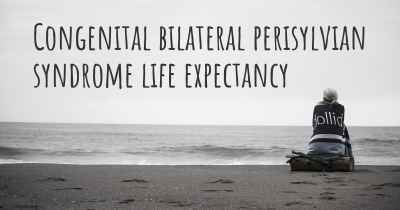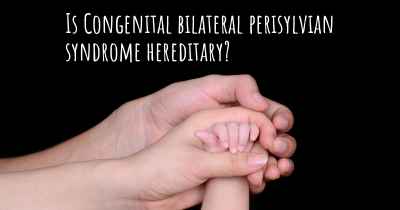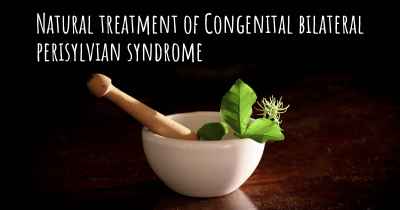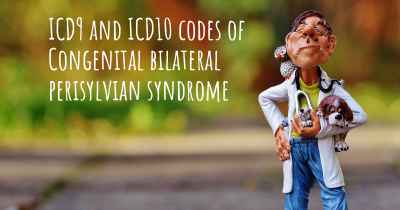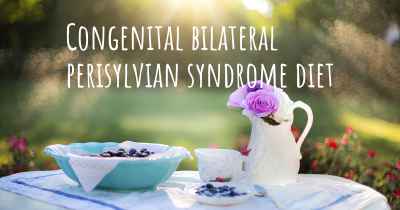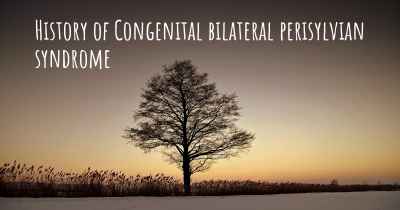Living with Congenital bilateral perisylvian syndrome. How to live with Congenital bilateral perisylvian syndrome?
Can you be happy living with Congenital bilateral perisylvian syndrome? What do you have to do to be happy with Congenital bilateral perisylvian syndrome? Living with Congenital bilateral perisylvian syndrome can be difficult, but you have to fight to try to be happy. Have a look at things that other people have done to be happy with Congenital bilateral perisylvian syndrome
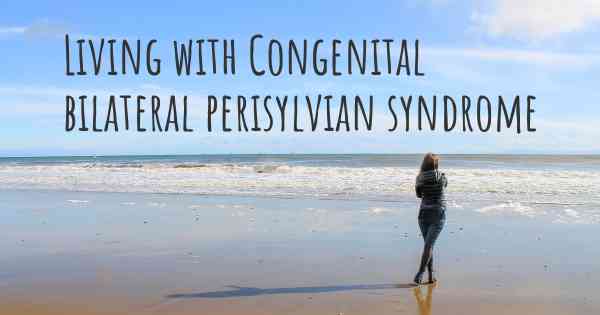
Living with Congenital Bilateral Perisylvian Syndrome
Congenital Bilateral Perisylvian Syndrome (CBPS) is a rare neurological disorder that affects the development of the brain. It is characterized by structural abnormalities in the perisylvian region, which is responsible for language and motor functions. Living with CBPS can present unique challenges, but with the right support and strategies, individuals with this condition can lead fulfilling lives.
Understanding CBPS
CBPS is typically present from birth and its severity can vary from person to person. Some common symptoms include:
- Speech and language difficulties: Individuals with CBPS often have challenges with speech production, understanding language, and expressing themselves verbally.
- Motor impairments: Fine and gross motor skills may be affected, leading to difficulties with coordination, balance, and dexterity.
- Epilepsy: Seizures are relatively common in individuals with CBPS, and appropriate medical management is essential.
- Cognitive and learning difficulties: Some individuals with CBPS may experience intellectual disabilities or learning difficulties, although intelligence can vary widely.
Creating a Supportive Environment
Living with CBPS requires a supportive environment that addresses the unique needs of individuals with this condition. Here are some strategies to consider:
- Early intervention: Early diagnosis and intervention are crucial for optimizing outcomes. Working with a team of healthcare professionals, including speech therapists, occupational therapists, and special educators, can help develop appropriate strategies and interventions.
- Communication support: Individuals with CBPS may benefit from alternative communication methods such as sign language, augmentative and alternative communication (AAC) devices, or picture-based communication systems.
- Education and learning: Tailoring educational programs to meet the specific needs of individuals with CBPS is essential. Individualized education plans (IEPs) can help address learning difficulties and provide necessary accommodations.
- Physical therapy: Engaging in regular physical therapy can help improve motor skills, coordination, and overall physical well-being.
- Seizure management: If seizures are present, it is important to work closely with a neurologist to develop an appropriate seizure management plan, which may include medication and lifestyle modifications.
Supporting Emotional Well-being
Living with CBPS can sometimes lead to emotional challenges for both individuals with the condition and their families. Here are some strategies to support emotional well-being:
- Seeking support: Connecting with support groups or organizations that specialize in CBPS can provide valuable emotional support and a sense of community.
- Encouraging independence: Empowering individuals with CBPS to develop their independence and self-advocacy skills can boost their self-esteem and overall well-being.
- Emphasizing strengths: Focusing on individuals' strengths and abilities rather than their limitations can help foster a positive self-image and promote resilience.
- Family support: Families play a crucial role in supporting individuals with CBPS. Open communication, patience, and understanding can go a long way in creating a nurturing environment.
Building a Network of Support
Living with CBPS is a journey that requires a strong network of support. Here are some key individuals who can provide support:
- Medical professionals: Neurologists, speech therapists, occupational therapists, and other healthcare professionals can offer specialized guidance and interventions.
- Educators: Collaborating with teachers, special educators, and school administrators can ensure appropriate educational accommodations and support.
- Therapists: Physical therapists, occupational therapists, and speech therapists can provide ongoing therapy to improve motor skills, coordination, and communication abilities.
- Support groups: Connecting with other individuals and families affected by CBPS through support groups or online communities can provide a valuable source of support, information, and understanding.
- Community resources: Exploring local resources such as disability services, respite care, and recreational programs can enhance the overall quality of life for individuals with CBPS.
Living with Congenital Bilateral Perisylvian Syndrome presents unique challenges, but with the right support, interventions, and a nurturing environment, individuals with CBPS can thrive and lead fulfilling lives.
Posted Aug 20, 2017 by Momof2miracles Jess Sundquist 4256
